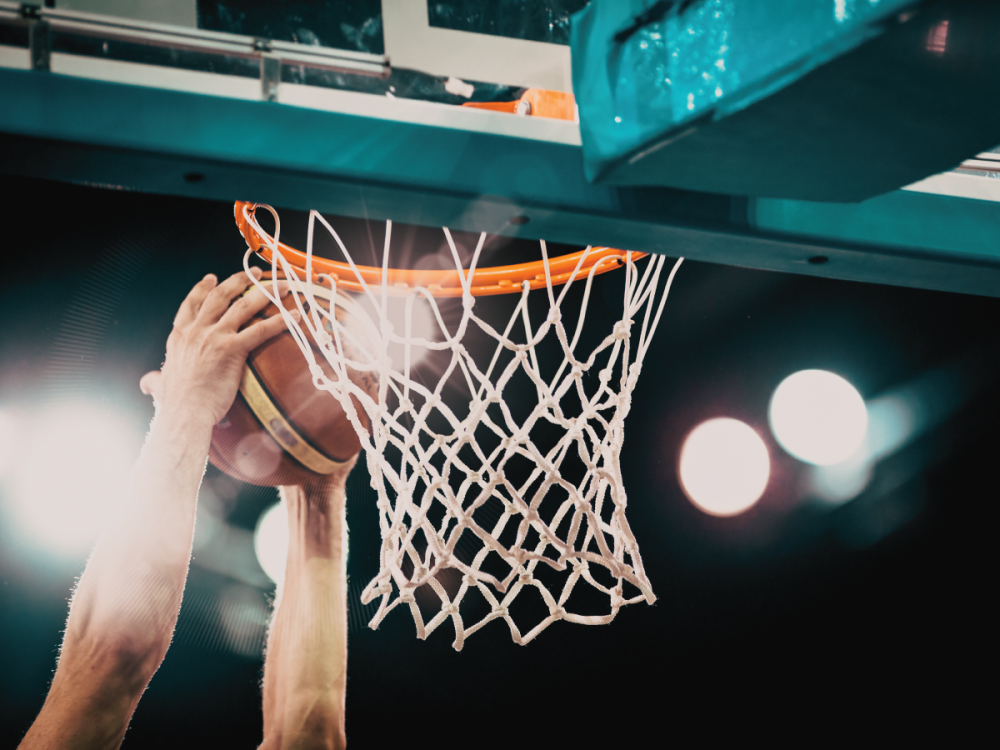March madness is not just a basketball tournament — it’s a prime opportunity for brands to connect with millions of passionate fans. With social media being at the heart of modern sports marketing, companies are finding very creative ways to drive engagement, spark conversations, and turn viral moments into marketing gold.

The Power of Real-Time Marketing
March Madness thrives on unpredictability. Moments such as buzzer-beaters, upsets, and cinderella stories are what brands use to capitalize in real time through X (Twitter), Instagram, and TikTok to gain massive visibility. For example, Wendy’s is notorious in dropping witty tweets in reaction to a major upset, which instantly grabs attention and sparks engagement. This works due to how timely it is, humorous, and how this relevant content feels very authentic and encourages shares.
Bracket Challenges and Interactive Campaigns
March Madness brackets are a cultural phenomenon, with millions of fans filling out predictions – even if they barely follow college basketball. Brands use this tradition to create their own interactive campaigns which drives participation and increases brand exposure. For example, Buffalo Wild Wings runs an “OT Bracket” campaign that rewards customers based on the number of overtime games in the tournament, tying real-world results to fan engagement. There is also the Reese’s “Sweet 16” Snack bracket which lets fans vote on their favorite peanut butter and chocolate combinations, seamlessly integrating March Madness into their own personalized product marketing. These work due to multiple reasons. Firstly, it encourages repeat engagement. Fans return daily to check their bracket rankings. Secondly, it boosts brand recall. Even if a fan does not win, they remember the brand associated with the contest. Finally, it drives social sharing. Fans are likely to share their brackets on social media, giving brands additional exposure.
Influencer & Athlete Partnerships
The rise of Name, Image, and Likeness (NIL) deals has transformed college sports marketing. Now, brands can partner directly with players, turning athletes into digital influencers who create content for TikTok, Instagram, and Twitter (X). Let’s get into some examples.
Gatorade partnered with Caitlin Clark last year. The Iowa Hawkeyes star has become one of the most followed college athletes on social media. Gatorade used this and partnered with her and she made a TikTok series showing her pergrae routines and hydration strategies.

There are also local NIL deals that happen with athletes. A New York-based pizza chain partnered with Syracuse players for a campaign where they rated local slices, merging basketball and regional culture. It works due to authenticity. Fans connect with players on a personal level more than with traditional ads. There is also higher engagement due to NIL deals often outperforming regular brand-sponsored content because they feel a lot more organic. It is also dire-to-fan messaging. Athletes introduce products naturally, like sharing their favorite game-day snacks or training gear.
Final Thoughts
March Madness 2025 is proving once again that social media is the ultimate battleground for brands. Whether they are leveraging real-time reactions, NIL athlete partnerships, or interactive brackets, companies that embrace digital marketing strategies turn basketball’s biggest tournament into a marketing slam dunk!
Want to read more about sports marketing? Click HERE to see more articles involving sports digital marketing!


Leave a Reply